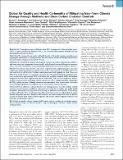| dc.contributor.author | Anenberg, Susan C. | |
| dc.contributor.author | Schwartz, Joel David | |
| dc.contributor.author | Shindell, Drew | |
| dc.contributor.author | Amann, Markus | |
| dc.contributor.author | Faluvegi, Greg | |
| dc.contributor.author | Klimont, Zbigniew | |
| dc.contributor.author | Janssens-Maenhout, Greet | |
| dc.contributor.author | Pozzoli, Luca | |
| dc.contributor.author | Van Dingenen, Rita | |
| dc.contributor.author | Vignati, Elisabetta | |
| dc.contributor.author | Emberson, Lisa | |
| dc.contributor.author | Muller, Nicholas Z. | |
| dc.contributor.author | West, J. Jason | |
| dc.contributor.author | Williams, Martin | |
| dc.contributor.author | Demkine, Volodymyr | |
| dc.contributor.author | Hicks, W. Kevin | |
| dc.contributor.author | Kuylenstierna, Johan | |
| dc.contributor.author | Raes, Frank | |
| dc.contributor.author | Ramanathan, Veerabhadran | |
| dc.date.accessioned | 2013-04-03T19:09:49Z | |
| dc.date.issued | 2012 | |
| dc.identifier.citation | Anenberg, Susan C., Joel Schwartz, Drew Shindell, Markus Amann, Greg Faluvegi, Zbigniew Klimont, Greet Janssens-Maenhout, Luca Pozzoli, Rita Van Dingenen, Elisabetta Vignati, Lisa Emberson, Nicholas Z. Muller, J. Jason West, Martin Williams, Volodymyr Demkine, W. Kevin Hicks, Johan Kuylenstierna, Frank Raes, and Veerabhadran Ramanathan. 2012. Global air quality and health co-benefits of mitigating near-term climate change through methane and black carbon emission controls. Environmental Health Perspectives 120(6): 831-839. | en_US |
| dc.identifier.issn | 0091-6765 | en_US |
| dc.identifier.uri | http://nrs.harvard.edu/urn-3:HUL.InstRepos:10496301 | |
| dc.description.abstract | Background: Tropospheric ozone and black carbon (BC), a component of fine particulate matter (PM ≤ 2.5 µm in aerodynamic diameter; PM:2.5), are associated with premature mortality and they disrupt global and regional climate. Objectives: We examined the air quality and health benefits of 14 specific emission control measures targeting BC and methane, an ozone precursor, that were selected because of their potential to reduce the rate of climate change over the next 20–40 years.: Methods: We simulated the impacts of mitigation measures on outdoor concentrations of PM2.5 and ozone using two composition-climate models, and calculated associated changes in premature PM2.5- and ozone-related deaths using epidemiologically derived concentration–response functions. Results: We estimated that, for PM:2.5 and ozone, respectively, fully implementing these measures could reduce global population-weighted average surface concentrations by 23–34% and 7–17% and avoid 0.6–4.4 and 0.04–0.52 million annual premature deaths globally in 2030. More than 80% of the health benefits are estimated to occur in Asia. We estimated that BC mitigation measures would achieve approximately 98% of the deaths that would be avoided if all BC and methane mitigation measures were implemented, due to reduced BC and associated reductions of nonmethane ozone precursor and organic carbon emissions as well as stronger mortality relationships for PM2.5 relative to ozone. Although subject to large uncertainty, these estimates and conclusions are not strongly dependent on assumptions for the concentration–response function. Conclusions: In addition to climate benefits, our findings indicate that the methane and BC emission control measures would have substantial co-benefits for air quality and public health worldwide, potentially reversing trends of increasing air pollution concentrations and mortality in Africa and South, West, and Central Asia. These projected benefits are independent of carbon dioxide mitigation measures. Benefits of BC measures are underestimated because we did not account for benefits from reduced indoor exposures and because outdoor exposure estimates were limited by model spatial resolution.: | en_US |
| dc.language.iso | en_US | en_US |
| dc.publisher | National Institute of Environmental Health Sciences | en_US |
| dc.relation.isversionof | doi:10.1289/ehp.1104301 | en_US |
| dc.relation.hasversion | http://www.ncbi.nlm.nih.gov/pmc/articles/PMC3385429/pdf/ | en_US |
| dash.license | LAA | |
| dc.title | Global Air Quality and Health Co-benefits of Mitigating Near-Term Climate Change through Methane and Black Carbon Emission Controls | en_US |
| dc.type | Journal Article | en_US |
| dc.description.version | Version of Record | en_US |
| dc.relation.journal | Environmental Health Perspectives | en_US |
| dash.depositing.author | Schwartz, Joel David | |
| dc.date.available | 2013-04-03T19:09:49Z | |
| dc.identifier.doi | 10.1289/ehp.1104301 | * |
| dash.contributor.affiliated | Schwartz, Joel | |
| dc.identifier.orcid | 0000-0002-2557-150X | |


